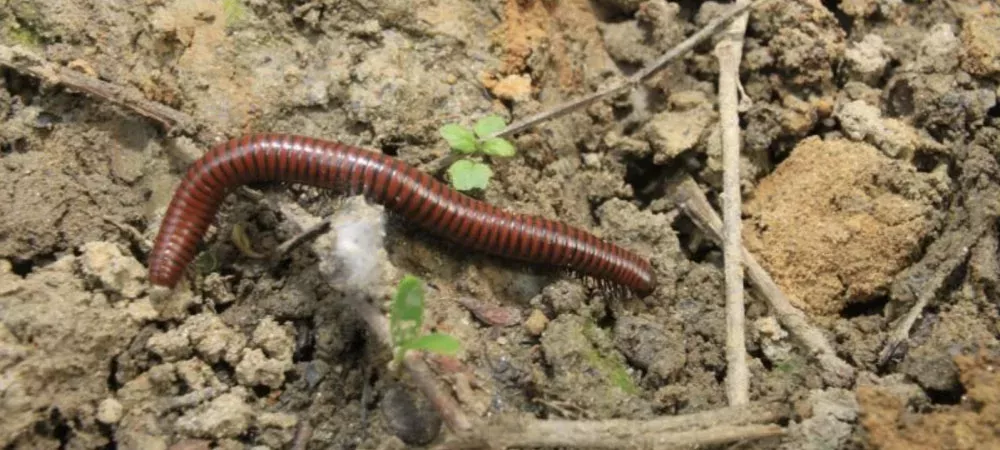What You Need to Know About Millipedes in Florida

If you’ve lived in Florida for more than a few years, you may be familiar with the seasonal migration of the millipede. Though there are many species, our most common local variety is known as Oxidus garcilis, or, the greenhouse millipede. Despite its namesake though, this pest doesn’t limit itself to the confines of any greenhouse. Learn about the seasonality of millipedes, what environmental factors lead to an increase in millipedes, and more throughout this blog.
- Why Are There So Many Millipedes in North Florida?
- Are Millipedes Seasonal?
- Environmental Factors That Increase Millipede Population
- How To Get Rid of Millipedes
Why Are There So Many Millipedes in North Florida?
Millipedes are drawn to damp, dark areas, which are abundant in Northern Florida. These pests can be found near garden beds, trash areas, and around landscaping. When it begins to get too dry outside for them in the hot Florida heat, they will crawl into your home through garage doors, air vents, basement doors, and more. One millipede isn't an issue, but if a colony of these pests finds its way into your home, it can be a struggle to get them out.
Are Millipedes Seasonal?
Each year, towards the eve of autumn, these pests emerge nightly and begin their annual migration across lawns and through landscaping to mate, and they do so en masse. It’s during this veritable ‘Millipede Mardi Gras’ that these determined diplopods also manage to wander their way up foundations and—in some cases—inside our homes.
Usually, these migrations are somewhat reasonable, with perhaps only a dozen or so millipedes seen outside on any given day. Other times, they can seem to reach epidemic proportions. Millipedes aren’t like other seasonal swarmers. The severity of their swarm is directly related to immediate and local environmental conditions.
Environmental Factors That Increase Millipede Population
Some may wonder why they’re only just now seeing a millipede migration after living in Florida for 10 years. It may be due to different environmental factors that are now present that weren't in years past. In fact, when called upon for millipede problems, our technicians are trained to inspect your home and property to determine which type of environmental conditions may be the root cause of this millipede infestation. Conditions that contribute to millipede problems include:
- Excessive leaf litter beneath landscaping
- Standing water, such as that found by AC units
- Firewood or other objects being stored too closely to the home
- Gaps in weather stripping, stucco, or siding which allow easy entry into your home
- Over-watering your lawn is usually the most common factor for a millipede infestation. This is because millipedes require high moisture for their survival and reproduction. Too much water, however, will flood millipedes out of your lawn, sending them looking for higher ground, which is often your front doorstep.
How to Get Rid of Millipedes
So, what should you do if you find millipedes in or around your home? Well, although it’s quite natural to find them outside and even the occasional wanderer inside, an inordinate number (several daily) may be an indication of an underlying problem. Removing any excess thatch or leaf litter will limit their food source and allow these areas to maintain proper moisture control. Even still, in some cases where the migrations are unusually heavy, we encourage you to contact our team at Deans Services, so that we can dispatch one of our pest control technicians to evaluate environmental conditions and apply any appropriate products needed. By working together, you can be sure we’ll keep these persistent pests at bay! Call us at 352-515-9826 to get help with your millipede problem.
